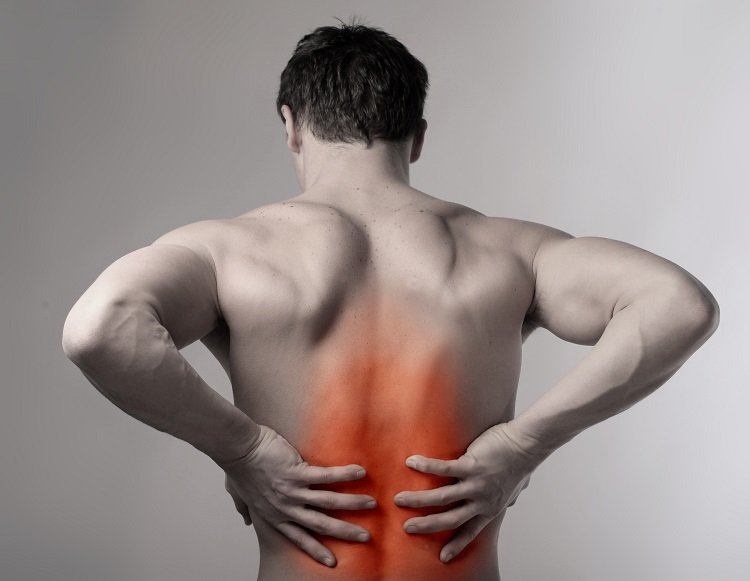The subway steps at Union Square seem steeper than they used to. Getting out of bed requires a careful, calculated movement. That sharp twinge when you reach for your coffee has become as routine as checking your phone. Back pain has a way of infiltrating every aspect of your day, transforming simple tasks into painful reminders that something is wrong.
For Manhattan residents, back pain isn’t just a physical inconvenience—it’s a barrier to the dynamic lifestyle that defines city living. Whether you’re climbing four flights to your walk-up, power-walking to meetings, or simply trying to keep up with the relentless pace of New York, chronic back pain can leave you feeling sidelined from your own life.
The statistics tell a sobering story: over 80% of adults will experience significant back pain at some point in their lives, and for many, it becomes a chronic condition that affects work performance, sleep quality, and overall well-being. But here’s what those numbers don’t capture—the personal cost of living with persistent pain in a city that never stops moving.
The Real Culprits Behind Your Back Pain
Back pain in Manhattan isn’t just about lifting something heavy or sleeping wrong. It’s often the result of modern urban living combined with the unique stressors of city life.
The Commuter’s Dilemma
Your daily commute might be contributing more to your back pain than you realize. Standing for extended periods on crowded subway cars, hunching over your phone during long rides, and carrying heavy bags create a perfect storm for spinal stress. The constant jarring from subway stops and starts, combined with awkward positioning in cramped spaces, places repetitive strain on your lower back muscles and vertebrae.
Desk Life Reality
Many Manhattan professionals spend 8-10 hours daily seated at desks, often in less-than-ideal ergonomic setups. This prolonged sitting increases pressure on your spinal discs by up to 40% compared to standing. Over months and years, this sustained pressure can lead to disc degeneration, muscle imbalances, and the development of chronic pain patterns.
Urban Stress Factor
The psychological stress of city living manifests physically in your back. When you’re stressed, your body produces cortisol and other hormones that cause muscle tension, particularly in the lower back and shoulders. The constant state of alertness required for navigating busy streets, dealing with noise, and managing demanding schedules creates a chronic tension that your back bears the brunt of.
Sleep Disruption Cycle
Many New Yorkers struggle with quality sleep due to noise, stress, and irregular schedules. Poor sleep directly impacts your body’s ability to repair and recover, leaving your back muscles tight and your pain tolerance diminished. This creates a vicious cycle where pain disrupts sleep, and poor sleep intensifies pain.
When Back Pain Becomes More Than an Inconvenience
Not all back pain requires professional intervention, but certain warning signs indicate it’s time to stop managing symptoms and start addressing the root cause. Consider consulting a back pain doctor in Manhattan, NY if you experience:
Persistent Pain That Interferes with Daily Life
When your back pain consistently prevents you from activities you enjoy or need to do—whether that’s walking your dog in Central Park, carrying groceries up stairs, or sitting through a Broadway show—it’s moved beyond a minor inconvenience.
Radiating Symptoms
Pain that travels from your lower back down into your buttocks, thighs, or legs often indicates nerve involvement. This type of radiating pain, sometimes called sciatica, can be accompanied by numbness, tingling, or weakness in your legs and requires professional evaluation.
Morning Stiffness That Doesn’t Improve
While some morning stiffness is normal, especially as we age, persistent stiffness that takes hours to improve or gets progressively worse over time may indicate inflammatory conditions or structural problems that need treatment.
Pain Following an Injury
Even seemingly minor incidents—slipping on icy sidewalks, lifting luggage into overhead compartments, or jarring movements during sports—can cause injuries that worsen over time without proper treatment.
How Modal Pain Transforms Back Pain Treatment
At Modal Pain, we understand that effective back pain treatment requires more than just masking symptoms. Our approach centers on precise diagnosis and targeted interventions that address the specific source of your discomfort.
Advanced Diagnostic Precision
Before any treatment begins, we invest time in understanding exactly what’s causing your pain. Using state-of-the-art imaging and diagnostic techniques, our specialists can differentiate between muscle strain, disc problems, facet joint dysfunction, and nerve compression. This precision allows us to develop treatment plans that target your specific condition rather than applying generic approaches.
Minimally Invasive Solutions
Our focus on minimally invasive procedures means you can get significant relief without extensive downtime. For busy Manhattan professionals who can’t afford weeks of recovery, this approach offers an ideal balance of effectiveness and convenience.
Epidural Steroid Injections deliver powerful anti-inflammatory medication directly to inflamed nerve roots, providing rapid relief from radiating pain and reducing inflammation that may be causing nerve compression.
Facet Joint Injections target the small joints along your spine that can become arthritic and painful. These injections can both diagnose the source of your pain and provide months of relief.
Radiofrequency Ablation offers longer-lasting relief for chronic back pain stemming from facet joints. By interrupting the pain signals from problematic nerves, this procedure can provide relief for a year or more.
Trigger Point Injections address painful muscle knots that can develop from chronic tension and poor posture, helping restore normal muscle function and reducing referred pain.
The Cost of Ignoring Back Pain
Delaying treatment for chronic back pain often leads to a cascade of complications that extend far beyond physical discomfort. When pain persists, your body begins compensating by altering movement patterns, which can lead to additional problems in your hips, knees, and neck. This compensation can create a complex web of interconnected pain that becomes increasingly difficult to treat.
From a practical standpoint, untreated back pain affects work performance and can lead to increased sick days, reduced productivity, and missed career opportunities. For entrepreneurs and ambitious professionals, the impact on earning potential can be substantial.
Perhaps most importantly, chronic pain takes a toll on mental health. The constant discomfort, sleep disruption, and activity limitations associated with persistent back pain can contribute to anxiety, depression, and a reduced sense of overall life satisfaction.
Your Next Step Toward Relief
Back pain doctor in Manhattan, NY, provides the expertise and advanced care needed to help you overcome discomfort and restore your quality of life. With precise diagnosis, innovative treatment options, and a personalized approach, you can finally break free from chronic pain and return to the active, confident lifestyle you deserve.
Don’t let another month pass, hoping your pain will resolve on its own. The sooner you address the underlying cause of your discomfort, the more treatment options are available and the better your long-term outcome is likely to be.
Contact Modal Pain today to schedule your consultation with a leading back pain doctor in Manhattan, NY. Take the first step toward getting back to the activities, ambitions, and lifestyle that matter most to you.
Contact Info
Name – Modal Pain
Address – 369 Lexington Ave, Floor 25, New York, NY 10017
Phone – +16462906660
E-Mail – info@modalpain.com
Website – https://modalpain.com/









